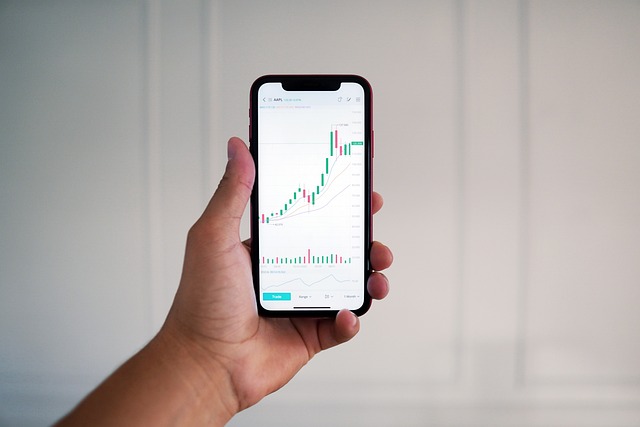The Golden Rules of Effective Communication
Effective communication is a foundation stone upon which successful relationships, both personal and professional, are built. Whether engaging in a casual conversation, a business meeting, or delivering a public speech, honing the finesse of your communication can make all the difference. This article explores the core tenets of effective communication, often referred to as the ‘Golden Rules’ of communication.
Understanding Effective Communication
At its essence, effective communication is not just about exchanging information; it involves understanding the emotions and intentions behind the information. It is about ensuring that the message is not only sent but also received in the way it was intended. This understanding shapes how we interact with others and influences the outcomes of our conversations.
Empathy: The Heart of Communication
Empathy plays a crucial role in effective communication. It allows one to connect with others on an emotional level, fostering trust and understanding. When practicing empathy, a communicator strives to acknowledge and validate the feelings and perspectives of others. This simple yet profound practice can vastly improve the quality of exchanges, as it promotes a sense of safety and openness.
The Importance of Clarity
One of the most instrumental golden rules of effective communication is clarity. A clear message reduces confusion and misunderstandings, ensuring that the recipient grasps the intended meaning. Clarity can be achieved through simple language, concise formulations, and straightforward expressions of ideas. When one articulates thoughts clearly, it minimizes room for misinterpretation and enhances the likelihood of the message being understood.
Active Listening: More Than Just Hearing
Active listening is another fundamental aspect of effective communication. It goes beyond simply hearing the words being spoken; it involves engaging with the speaker, showing that you are present and invested in the conversation. To practice active listening, one should focus on the speaker, refrain from interrupting, and provide feedback that indicates comprehension. By doing so, the communicator validates the speaker’s message and encourages further dialogue.
The Role of Body Language
Non-verbal cues significantly contribute to effective communication. Body language, facial expressions, and eye contact convey emotions and intentions, often speaking louder than words themselves. For instance, maintaining eye contact conveys interest and confidence, while crossed arms might suggest defensiveness or discomfort. Being aware of your body language and that of others can lead to more effective exchanges by aligning verbal and non-verbal messages.
Constructive Feedback
Providing constructive feedback is essential in maintaining effective communication, particularly in professional settings. Feedback should be framed positively, focusing on growth and improvement rather than criticism. Emphasizing the ‘what’ and ‘how’ instead of the ‘who’ can prevent defensiveness from others and ensure that the feedback is received as intended. This can cultivate an environment of open dialogue, where individuals feel safe to express themselves and learn from one another.
Adapting to Your Audience
Effective communicators understand the importance of adaptability in their messages. Tailoring your communication style to suit the audience plays a pivotal role in ensuring empowerment rather than alienation. This involves considering the demographic, cultural, and social backgrounds of the audience and aligning the message with their expectations and understanding. By making your content relatable, you increase the likelihood of engagement and comprehension.
Maintaining Positive Attitude
A positive attitude creates a conducive environment for effective communication. It serves to motivate and uplift the individuals involved, fostering a climate of collaboration rather than competition. Approaching conversations with an open mind, kindness, and respect enables a more productive exchange. Positivity can diffuse tense situations and facilitate the smooth flow of ideas, making it easier to work together towards shared goals.
Asking Questions
Questions are powerful tools in communication. They can clarify points, gather information, and encourage deeper engagement from all parties involved. Open-ended questions invite elaboration, while closed questions can be used for verification. The key is to ask questions thoughtfully and at appropriate moments, creating a dialogue rather than a monologue. Engaging others through questions not only demonstrates interest but can also yield new insights and perspectives.
Practice and Feedback
No one becomes an effective communicator overnight. It requires practice and a willingness to seek feedback. Regularly engaging in conversations, public speaking, or even writing can significantly enhance one’s communication skills. Moreover, inviting feedback from trusted colleagues or friends can provide invaluable insights into areas for improvement, helping the individual to refine their approach over time.
The Role of Technology
In the modern era, technology plays a significant role in communication. While it provides tools to enhance communication, it can also present challenges. The lack of non-verbal cues in written communication, for example, can lead to misinterpretations. Therefore, it is essential to employ technology wisely – using it as a means to facilitate clear and effective exchanges rather than replacing them entirely. Ensuring that digital communication methods align with the principles of effective communication is key to maintaining strong relationships in a virtual world.
Conclusion
Mastering the art of communication is an ongoing journey. By adhering to these golden rules—emphasizing empathy, clarity, active listening, body language awareness, constructive feedback, adaptability, a positive attitude, and the use of questions—you can significantly enhance your communication skills. Furthermore, embracing the role of technology while maintaining the personal touch of face-to-face interactions will ensure that your communication remains effective and meaningful. As you cultivate these skills, remember that every conversation is an opportunity for connection, learning, and growth.








